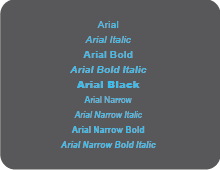


The contingent nature of the symbolic associations of visual design elements: The case of brand logo frames.


West Conshohocken, PA: ASTM Publications.įajardo, T. Gelinas (Ed.), Creative applications: Sensory techniques used in conducting packaging research (pp. Perceiving what package designs express: A multisensory exploratory study using creative writing measurement techniques. If it’s hard to read…try harder! Processing fluency as signal for effort adjustment. Mixed messages in brand names: Separating the impacts of letter shape from sound symbolism. Norms for Osgood’s affective meaning (evaluation, potency, activity): Ratings of logos, colors, products and services, names, and typefaces. The massage in the medium: Transfer of connotative meaning from typeface to names and products. Dressed for the occasion: Font-product congruity in the perception of logotype. Determinants of feeling tone in type faces. Intuitive evolutionary perspectives in marketing practices. Duluth, MN: Association for Consumer Research.Ĭolarelli, S. Price (Eds.), NA-Advances in Consumer Research Volume 33 (pp. If I don’t understand it, it must be new: Processing fluency and perceived product innovativeness. Journal of Consumer Psychology, 12(2), 93–106.Ĭho, H., & Schwarz, N. All dressed up with something to say: Effects of typeface semantic associations on brand perceptions and consumer memory. Food Quality and Preference, 39, 167–175.Ĭhilders, T. Food packages and communication through typeface design: The exoticism of exotypes. British Journal of Statistical Psychology, 8(1), 29–56.Ĭelhay, F., Boysselle, J., & Cohen, J. Technical Communication, 50, 206–223.īurt, C., Cooper, W. The rhetoric of typography: The persona of typeface and text. What’s the difference between a font and a typeface? The Fast Company. Vancouver, BC: Hartley & Marks.īrownlee, J. Bouba and Kiki in Namibia? A remote culture make similar shape-sound matches, but different shape-taste matches to Westerners. Reillanne: Atelier Perrousseaux.īremner, A., Caparos, S., Davidoff, J., de Fockert, J., Linnell, K., & Spence, C. Aide au choix de la typographie-Cours supérieur. Paris: Universiti de la Sorbonne.īlanchard, G. Pour une sémiologie de la typographie (Doctoral dissertation). Zeitschrift für Angewandte Psychologie, 17(1–3), 165–172.īlanchard, G. Reading words, seeing style: The neuropsychology of word, font and handwriting perception. J., Sekunova, A., Sheldon, C., Johnston, S., Iaria, G., & Scheel, M. Current Directions in Psychological Science, 22(6), 437–442.īar, M., & Neta, M. In this chapter, we review the emerging literature on the scientific approach to typeface design, stressing the key role it can play in creating the most persuasive packaging solutions. Meanwhile, iconic typefaces may, over time, come to be attached with specific brands, given our repeated exposure to them on packaging in the marketplace. Choosing typeface and font for the packaging that is incongruent with what a product stands for can negatively impact the consumer’s perception/evaluation of a brand. Insights into which features of the typeface might be best suited to conveying (or priming) different meanings emerged from the older research on the semantic differential technique and from more recent research on the crossmodal correspondences. A growing body of empirical research, however, now demonstrates that typefaces can be used to convey/reinforce specific brand associations. This is particularly surprising given that virtually all packaging incorporates some text (e.g., logotypes, slogans, product information). Yet, at the same time, it is also an area that is often neglected in books on packaging. Choosing the appropriate typeface and font for use in product packaging is an important part of the design process (or at least it should be).


 0 kommentar(er)
0 kommentar(er)
